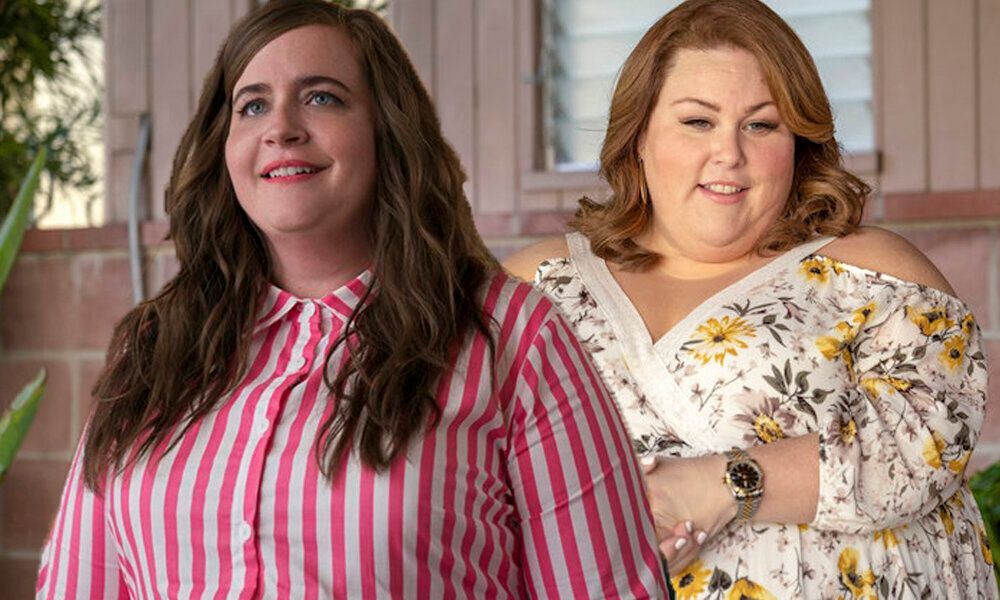“Being fat is messy and difficult and chaotic and uncomfortable and glorious and funny,” explains Katie Greenall, a London-based actor who wrote and starred in the award-winning Fatty Fat Fat, a play based on her own experiences of being in a larger body.
“I don’t think I’ve seen any fiction that has really spoken to me,” she adds.
In the mainstream, plus size roles have often been restricted to certain tropes, for instance comedic portrayals such as The Nutty Professor, or Monica when she wears the fat suit in Friends.
It’s also common to see bigger bodied people play parents or grandparents, or larger-than-life best friends, such as Megan in Bridesmaids, played by Melissa McCarthy, or Rebel Wilson’s Fat Amy in Pitch Perfect.
But recently, hit shows like Shrill and This Is Us are presenting more progressive and complex images of plus sized people.
In This Is Us, actor Chrissy Metz plays Kate, a bigger woman who is dealing with the multiple traumas of her past, including her father’s untimely death, which impact her weight. The role has earned her Emmy and Golden Globe nominations.
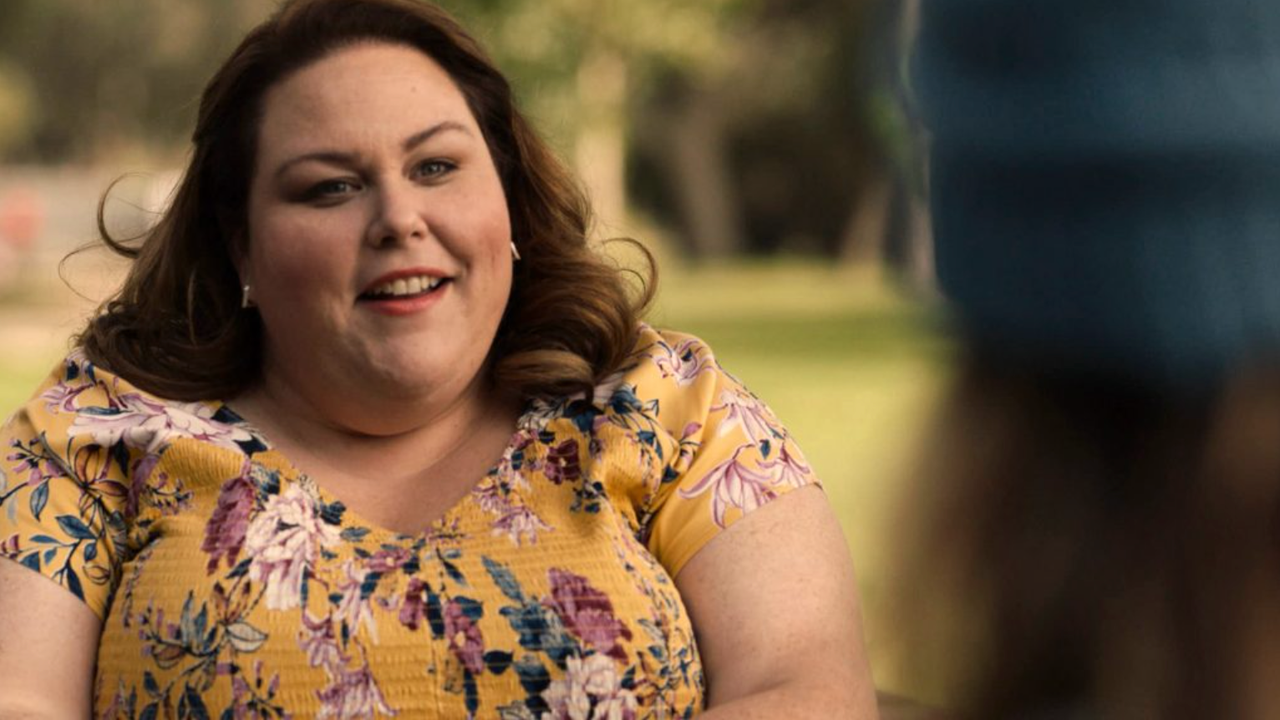
Chrissy immediately identified with the role.
“Here was this woman who was actually dealing with weight. Not like, ‘Oh my God, I gained a pound,’” Chrissy explained to the Hollywood Reporter. “She was a real woman who was really struggling, and all I could think was, ‘Oh my God, I’m Kate.’”
In Shrill, Aidy Bryant plays a bigger-bodied woman called Annie, a budding journalist on the path to finding her voice, and her confidence.
Aidy herself is a body positive activist. “I’m not going to apologise for my size,” she told the Woman of the Hour podcast.
“I’m not wrong for having the body that I do. I still deserve to dress cool. I still deserve to feel as glamorous or as ‘Hollywood cool’ as anyone else.”

But this handful of progressive roles highlight how few parts there are for – and about – larger people in mainstream entertainment.
“My body makes different sounds and my body does different things,” Katie says. “I think we’re still struggling to find the nuance of presenting something that is fat positive – I think something like Shrill is, but then it’s not showing the nuance to that as well.”
In her play, Katie shares some of the darker experiences of being bigger bodied inspired by real life events in her life: the types of things we don’t often see in the mainstream. She talks about how she was elated when her mum bought her the DJ Casper track Cha-Cha Slide on CD, but then how crestfallen she felt when she told her to use the CD to work out to.
On another occasion, Katie, aged five, was sent to school in dress up for World Book Day as The Fat Controller from Thomas The Tank Engine.
“I was given a song in my first year of drama school, but rather than being given, I dunno, On My Own from Les Mis, I was given a song called I’m Not Pregnant, I’m Just Fat,” Katie says.
“I was aged 19 at drama school, and told that that was my casting, and I sort of had to get used to it.”
She continues: “I had to get up in front of my whole drama school and sing. It was almost like outing myself in a certain way – I had never used those words to describe myself before. At the time I didn’t think much of it, but now looking back on it, that’s really – excuse my language – fucked up.”

Performing in Fatty Fat Fat has allowed Katie to own her body, she tells us, and has been a sort of catharsis. It’s a feeling she reached after initially finding the role challenging to perform when the show premiered in 2018.
In that sense, more plus size roles aren’t only beneficial for viewers to widen their knowledge, they can also help actors process some of their own concerns with their body image.
“There’s been times in auditions where I’ve asked to be seen for a different role, and they tried to push me into something that’s more stereotypical, because of the way I look,” says Samia LaVirgne, a plus-size actor based in Birmingham.
“I like playing mother roles, I can do that, but I would like to be given the opportunity to do other things. I’ve gotten a little bit depressed when I wasn’t given that chance, or that opportunity,” she says.
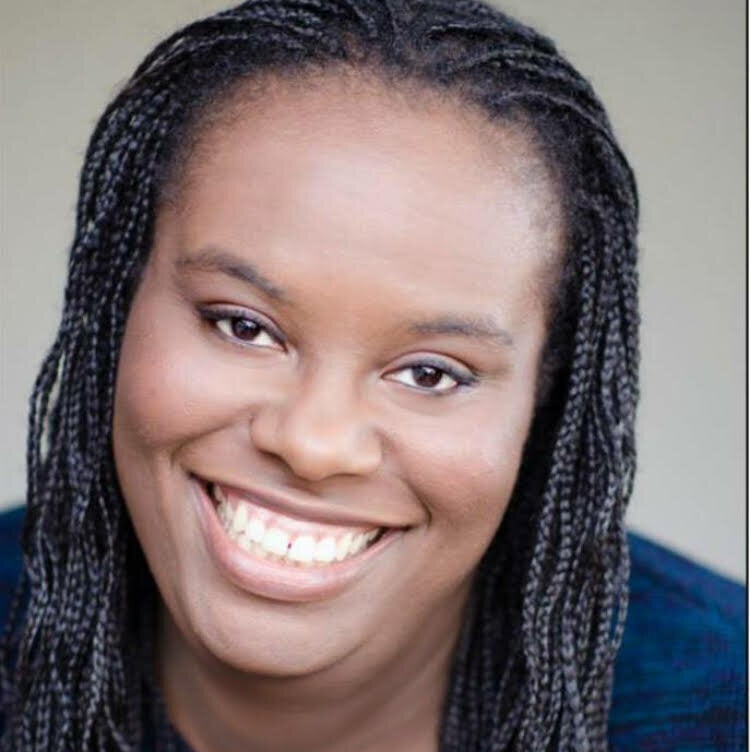
Samia explains that playing a well-written plus size character would be exciting.
“It would be an interesting and rare and potentially very freeing and enlightening opportunity, depending on the story,” she says.
“For me to be able to explore that in a true and authentic way – but it would also take a lot of courage to be that vulnerable and share that part of me.”
Speaking more about how larger people are often stereotypically displayed on screen, Samia says: “Fat people are funny, apparently. Mothers are okay, it’s okay to be plus size and be a mother because you’ve had kids, so losing that baby weight is kinda hard sometimes, so we’ll allow it.
“Or you’re in some sort of service role like a nurse, or some sort of care giver or something like that – that’s usually when I see plus-sized women. Or it’s something to do with food.
“I would like to see more roles for plus size people, particularly women, that have nothing to do with those sort of tropes,” Samia says, and Katie agrees.
“Shrill and This Is Us are really great examples of work that are talking directly to fatness,” Katie adds. “[But] what I’m really interested in is how we can present fat bodies in a way where we’re not always talking directly about their fatness.”
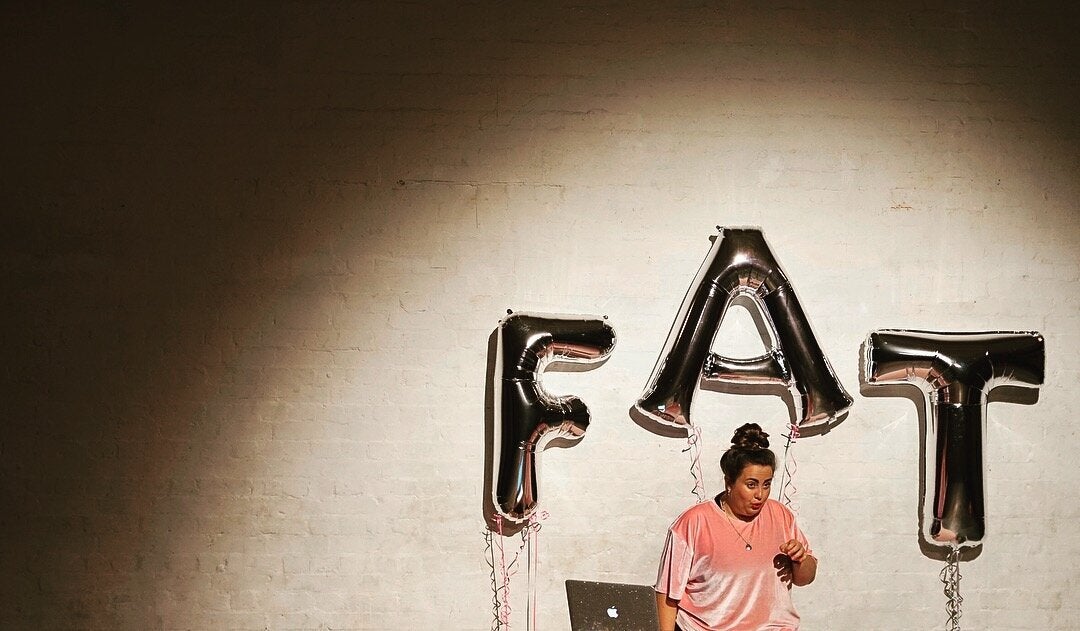
Elements Katie feels are in dire need of representation are “fat love and fat sex and fat intimacy.”
“We aren’t taught that that exists,” Katie says. “When are fat bodies sexualised or admired or fancied without it being about their bodies?”
As ever, there are intersectional communities which face harsher treatment than others. Within the plus-size community, women and minority ethnic groups are likely to receive more thinly-veiled representation than plus size men, says Samia.
“I’m a six-foot tall, plus-size Black woman, I’ve been walking around saying I feel like a triple threat in the industry, and not in a good way,” she says.
“I remember being told that I didn’t really fit into a type. Knowing your casting is fairly important in this industry, you’re supposed to know what your casting is, but no one has been able to tell me what my quote-unquote ‘type’ is.”
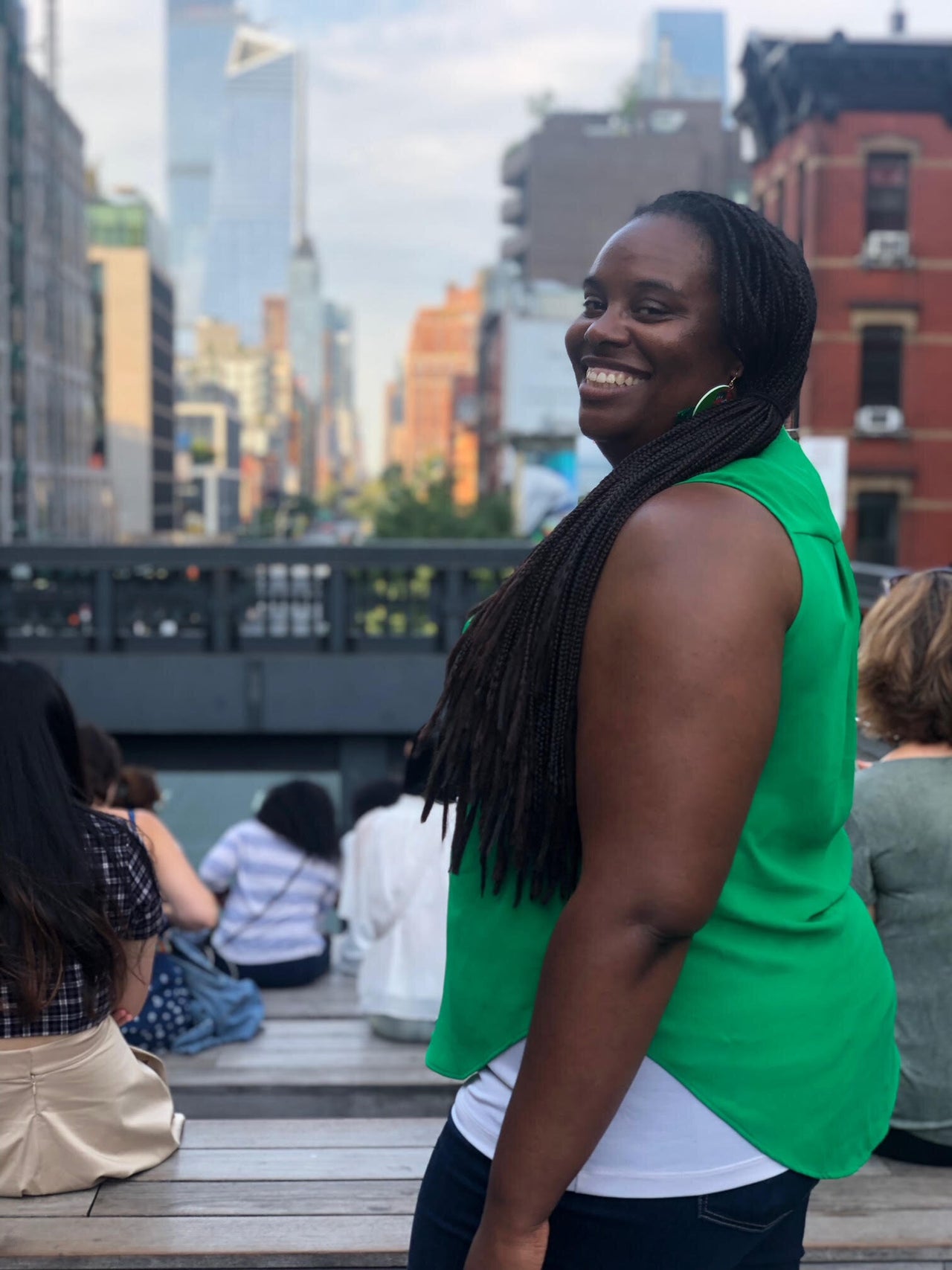
Samia continues: “Plus size is really used for women, it’s a feminine term. You don’t really hear men being considered as plus size although there are men who are larger – but they’re known as big and tall.
“It seems that when looking at film and television, I see a lot more men that are quote-unquote plus size or larger than women, as far as having more variety of roles.”
Max Talisman, an actor based in the States, has created a plus size role which he feels speaks to his experience. It’s a response to how he feels there is a lack of available roles which truly reflect his life.
“That’s why I started writing,” he says, “in order to create the roles I didn’t see already in the landscape of what plus size actors can play.”
Max has written and stars in the forthcoming rom-com Things Like This, where he plays a queer plus size lead.
“Funding has always been an uphill battle for the film because not only are we telling a queer story made by queer people, but also one of our romantic leads is plus sized,” he says.
“I’m lucky that I have a never give up attitude, and that has allowed me to keep getting my movie made, but the truth is that the body shamers aren’t just in Hollywood, but in the queer community at large as well, and that absolutely needs to change.”
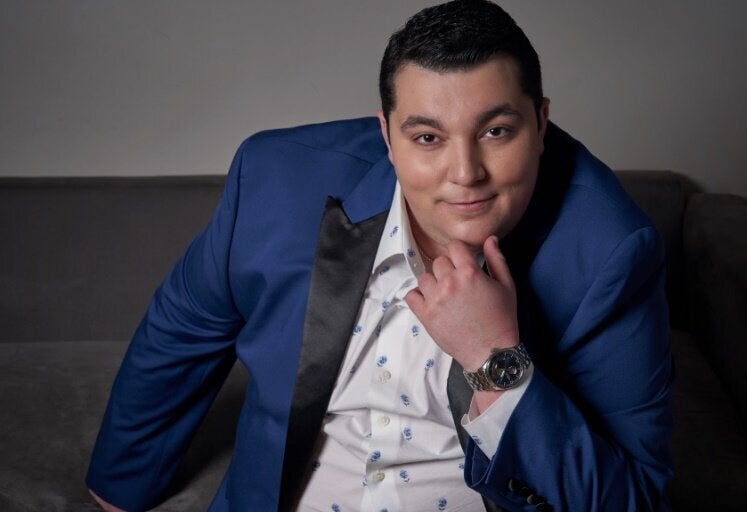
Change, of course, can come from the inside, from the casting directors and writers. Seth Mason is a freelance casting director based in London, and he agrees with Samia and Katie that more needs to be done.
“As someone whose weight has fluctuated heavily throughout my life, I think it would have given me more confidence growing up to see more representation of larger people,” he says. “And I’m keen to do my bit to try and make sure that balance is addressed as I build my work in casting.”
What does Seth think is going wrong as it stands? “I can think of so many supremely talented bigger actors who deserve to be leading their own projects but aren’t,” he reflects.
“Is this just the brutal odds of being an actor, or is it an industry or societal prejudice about size holding them back? I’m still not sure, but I have a sinking feeling that, sadly, the latter may have something to do with it.”
Seth says that “on occasion,” he and his teams have had to ask script writers to redact comments about people’s size in scripts “that feel unnecessary and disrespectful”.
“It’s rare that smaller body types are referred to in a negative way like this,” he says.
Due to this toxic culture which can exclude bigger bodies, Seth feels many actors of a plus size have it “ingrained” that their size matters, when actually, casting teams are usually given no instruction to search for a particular body size.
“I remember one actress coming in to audition for a role on an American network show that we were working on. For some reason, I think her head was in the place that to be on a big shiny American show, she had to be a certain look and size,” Seth remembers.
“We had a lovely and chatty audition and, at the end, the mood changed somewhat and she started talking, quite out the blue, about how she’d been losing weight recently and listing her exercise regime.
“I felt really sad that she’d been made to feel from this industry that she had to explain and caveat all that to be considered for the role. I assured her that size really wasn’t a consideration on the role for us but it felt quite ingrained in her sadly.”
So how might we produce more high quality, plus size roles?
For a start, it would be helpful for the term ‘plus size’ to actually represent more plus size people, argues Emily Lauren, author of Body Positive: A Guide To Loving Your Body.
A quick Google search of articles about plus size celebrities often gives results filled with images of women that look ordinarily sized, and not necessarily plus sized, she says.
“It’s important to note that the ‘acceptable’ plus size bodies represented in the entertainment industry have similar proportions to straight size actresses,” she argues. “I don’t consider this real diversity because the women who take up this space are still predominantly white, have near flawless skin, and hourglass figures.”
Emily cites Amy Schumer as an example.
“She has said she is somewhere between a size six and eight, but often she gets classified as plus size by the media because she is seen as much bigger than other actresses.”
Samia has experienced this blurring of the lines around what plus size actually looks like. “You’re kind of in the middle,” she says of herself. “You know you’re plus size but I’m not really huge or fat, and I’m not skinny.”
She recalls a piece of advice given to her by an industry professional: “That I would either need to lose a lot of weight or gain a lot of weight to be considered for roles. That was like just being honest, you know, and I was thankful that this individual told me that.”
Another part of the problem is that, as a society, we have a poor understanding of the reasons why people inhabit bigger bodies, says Emily.
“We’re taught that the size of someone shows us how healthy they are and that’s simply not the case,” she says.
She explains how “many other factors, such as genetics, determine the way we look” and posits that “regardless of how healthy a person is or not, we are all worthy”.
“Would we blame cancer patients for their health issues, or do we call out thin people that eat poorly? Emily asks. “No, but we always blame fat people because we’ve been taught to hate and fear fatness.”
Emily actually thinks the examples of Shrill and This Is Us are incredibly positive.
“They aren’t just playing the funny, fat friend. They are main characters who are actually seen dealing with issues that regular women face and it’s very important to have that kind of representation out there,” she says.
She also notes Amy Schumer’s movie I Feel Pretty as a progressive take on plus size culture.
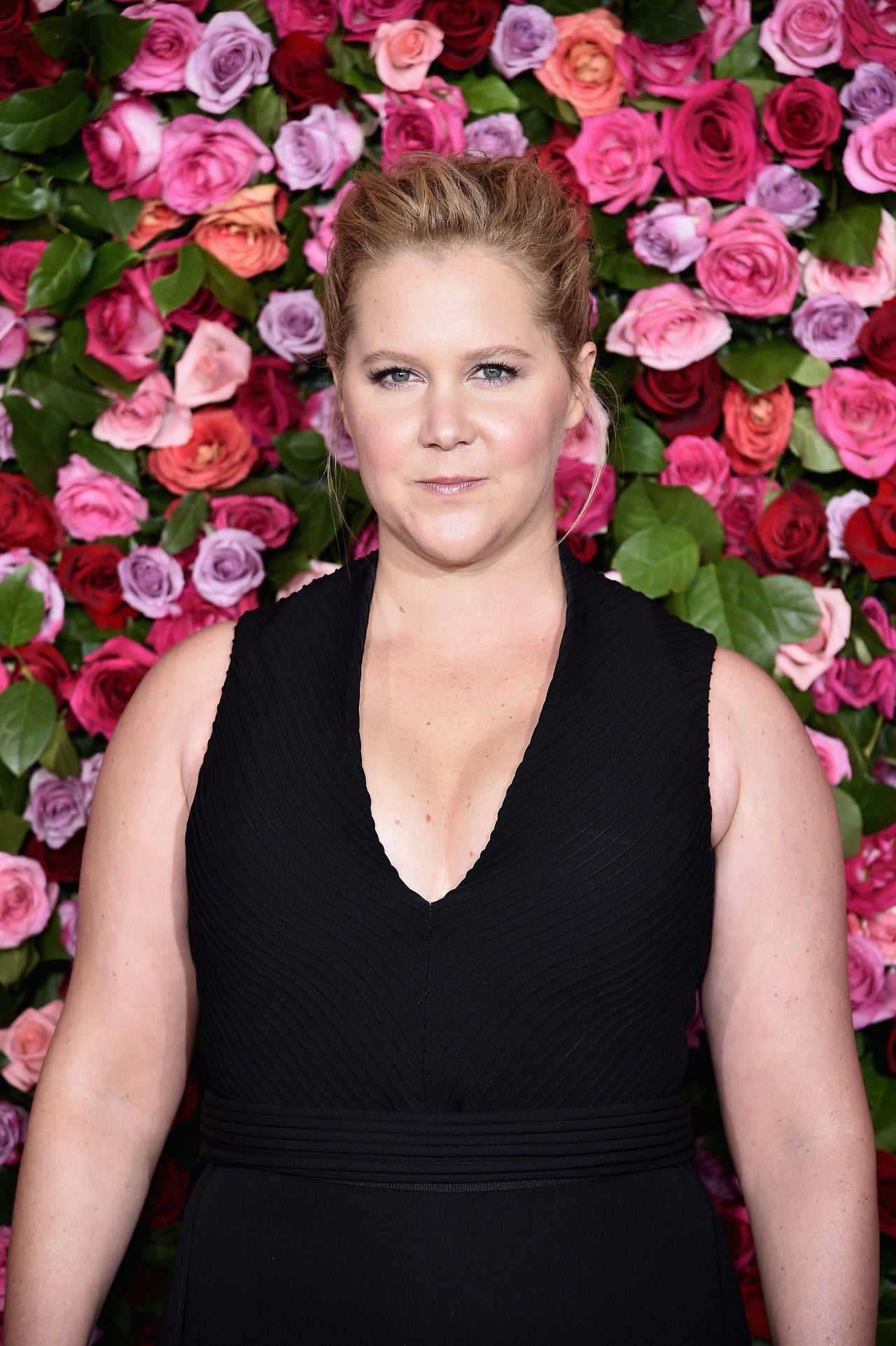
“The premise in this movie was an ‘average’ woman who hits her head and wakes up believing she looks like a model. Her confidence (or rather the shame she no longer felt after her accident) allowed her to advocate for herself and she became successful on merits unrelated to her appearance.
“I love this message because think of how many amazing things women would be able to accomplish if they stopped worrying about the way they looked!” she says.
The most damning case of all for more representation may be that 60% of the viewing population in the UK are classed as overweight, says Seth.
“This is the majority of the viewing population,” he says. “The numbers just don’t even begin to reflect real life.”
Perhaps, as Seth notes, one answer to achieving more diverse representation is urgently hiring more plus size writers, directors and producers.
Samia agrees. “We need to have more diversity in the makeup of teams, people who are casting, creating, so that they can come up with newer and fresher ideas to help the old stodgy people who are stuck in the last century with their mindset,” she says.
“Let’s find the joy of creating something new.”
